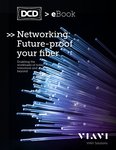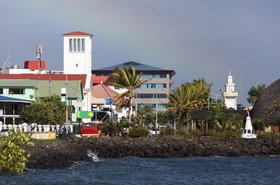Forget broadband networks as you know them. Changes are about to hit the way we deploy traditional, monolithic broadband network gateways (BNGs), and this shift is set to revolutionize connectivity for Internet Service Providers (ISPs) worldwide.
Carrier-Grade NAT (CGNAT) is widely used to compensate for the shortage of IP addresses and translates private addresses into public IPv4 addresses.
Typically, CGNAT systems are either completely isolated devices from BNGs, or performed by separate line cards in a large fixed BNG chassis. But with a single upgrade, CGNATs can do their thing in-line in the BNG forwarding plane, eliminating the need for separate CGNAT hardware altogether.
So, what does this unification mean for ISPs and the home user?
The issues lurking beneath
For years, ISPs have grappled with the limitations of traditional BNGs — a notable sore spot being their rigid restrictions.
A key issue with monolithic tech is vendor lock-in, which cements ISPs into a particular vendor's BNG platform, completely eradicating any chance of software flexibility for years at a time, and increasing costs.
Scalability is also an Achilles heel for ISPs. Traditional BNG systems make it impossible to cost-effectively scale down or out and are even limited by how large they can become. This impacts a service provider’s ability to meet the varying demands of broadband networks. If traffic increases exponentially, BNGs can quickly become overloaded, and performance suffers as a result.
Moreover, the current standard for Internet addresses, IPv4, is running out, creating problems for ISPs who assign a unique public IPv4 address to each BNG.
Despite IPv6 solving this issue, only one third of IPv6-capable requests were made over IPv6 in 2023 due to the vast majority of modern equipment still only supporting IPv4, per Cloudflare. Alas, the IPv4 address exhaustion dilemma continues to unravel.
That’s where disaggregation on CGNAT comes in.
Too good to be true?
Put simply, disaggregation is the separation of hardware and software, where both are sourced independently of one another.
With disaggregated routing software, operators can deliver both CGNAT and BNG on a single open switch. Open switches are essentially powerful pieces of hardware designed to run a variety of network operating systems and software applications. This means they’re not defined by a specific vendor, allowing for custom functionalities and advanced flexibility.
Through this, ISPs gain complete choice and control over their network components. This new-found power and adaptability enables providers to comfortably manage large numbers of customers on a single, public Internet connection. And by running both CGNAT and BNG on a single device, the need for separate routers, CGNAT devices, and BNGs is eliminated, saving service providers money on hardware and boosting efficiency through simplified network management.
Even home users can feel the benefits of this tech advancement, with cost savings generated through this solution offering the potential to drive more competitive pricing for Internet services.
Paving the way for future technologies
Disaggregation has the power to liberate ISPs from the tight restraints of monolithic systems. But what does this mean for telcos going forward?
With thousands of nodes, a wide variety of equipment types, and millions of subscribers, telcos once had to manage and optimize their networks manually, requiring a large workforce and arduous labor.
Disaggregation has unveiled a wealth of opportunity, laying the groundwork for upcoming technologies like AI integration within networks.
By providing the largest, fastest, and simplest source of data extraction for AI systems to consume, disaggregation can help bring efficiency up a notch as operators take advantage of real-time data and adapt the network quickly and accordingly. Not only that, but network process visibility afforded by disaggregated routers empowers AI to predict failures, optimize resources, and enhance security.
As telco’s new tool for transformation, disaggregation enables ISPs to break free from traditional systems and vendor lock-ins, to unleash a refreshing wave of innovation, spreading to home networks far and wide. Brands can either join in or fall behind. Are you going to be a part of the movement?








